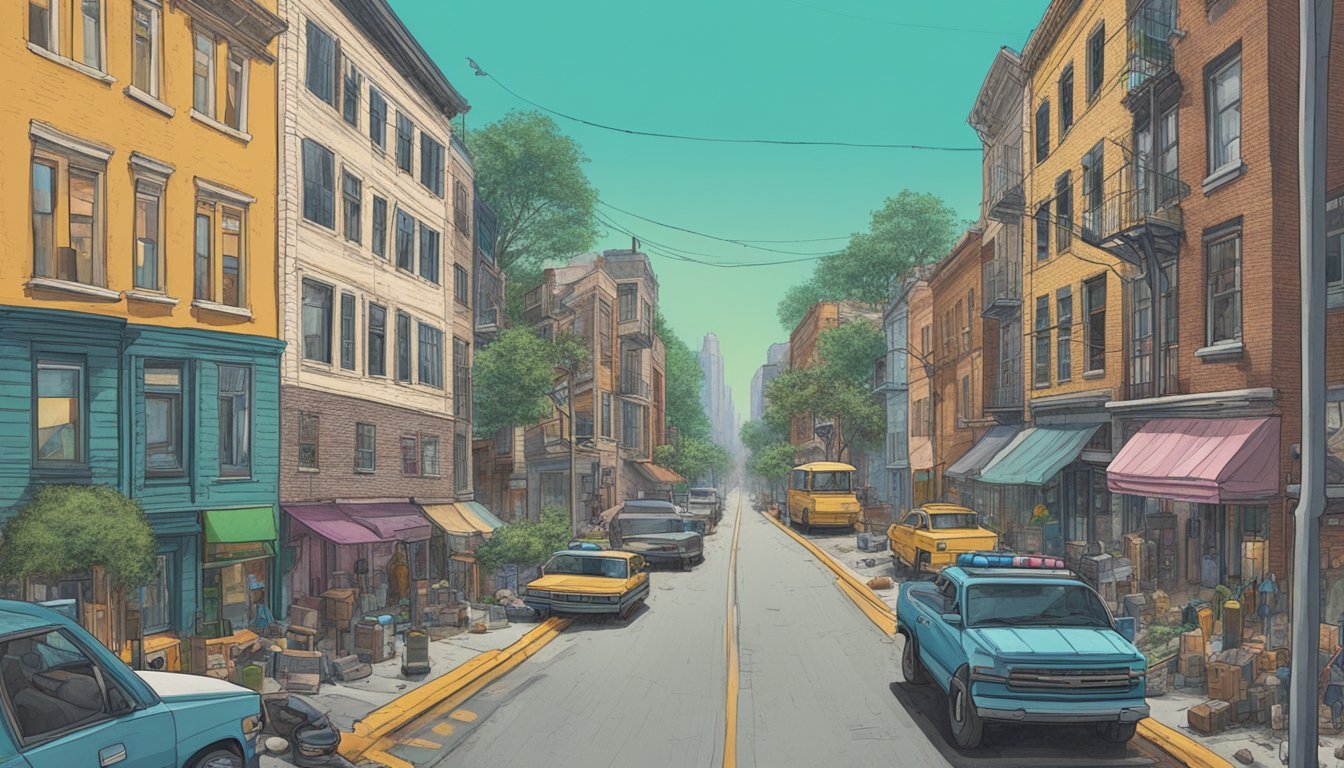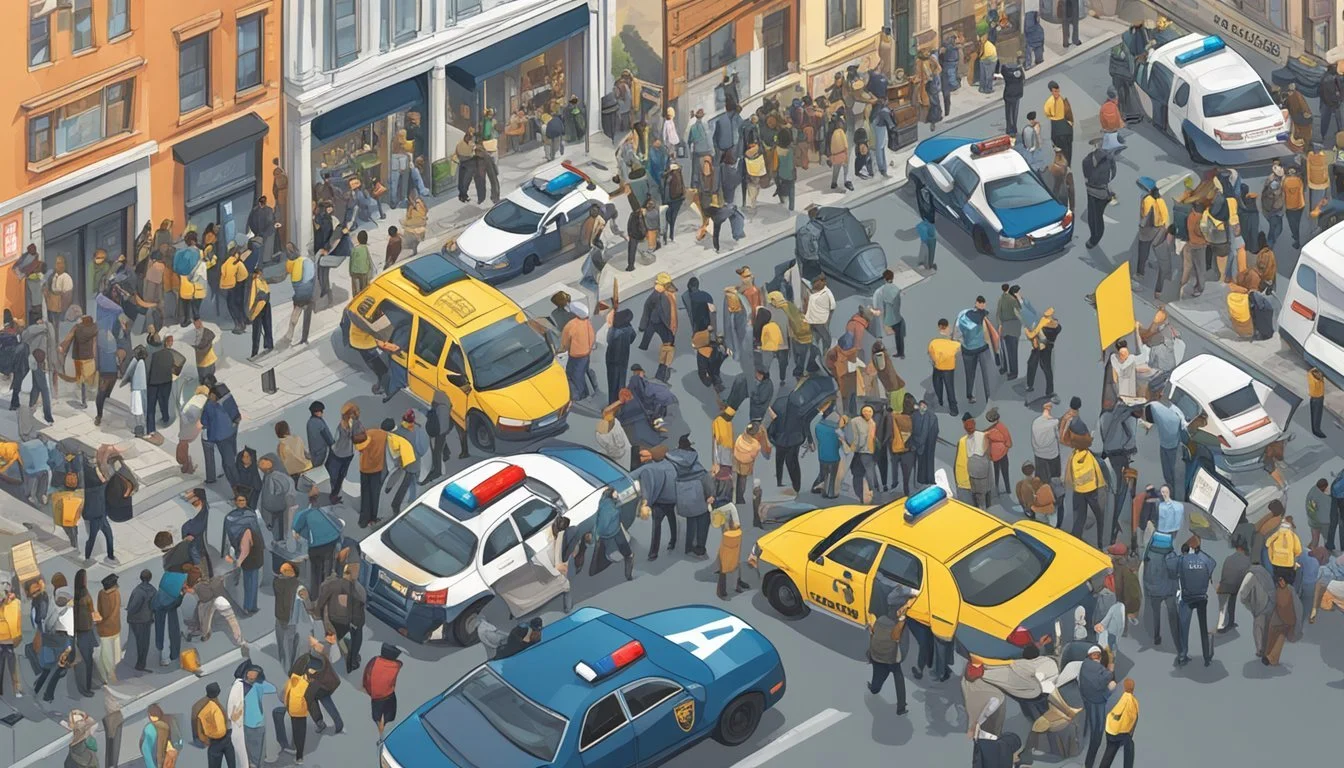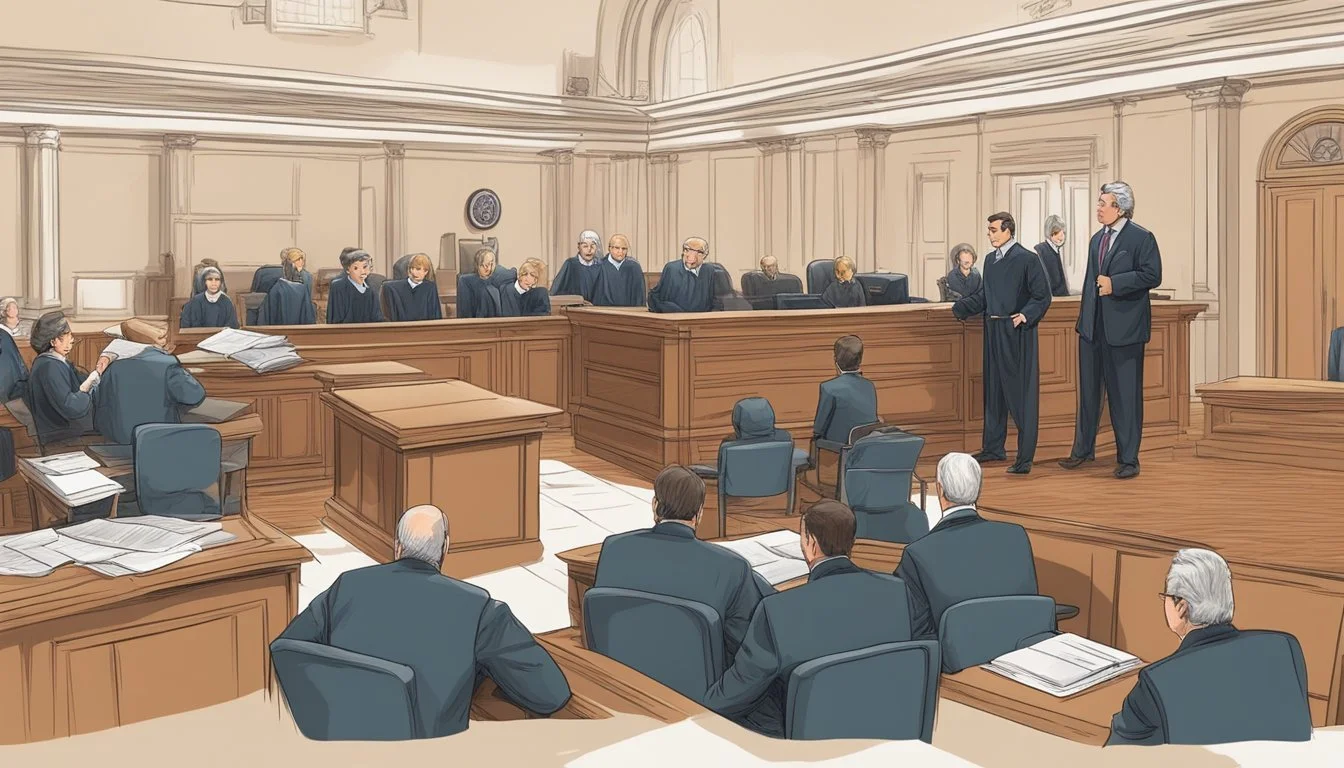Unmasking the Drug War: The True Events of Traffic
A Deep Dive into the Film's Real-World Inspiration
Steven Soderbergh's "Traffic" captivated audiences with its gritty portrayal of the drug war when it hit theaters in 2000. The film weaves together multiple storylines to explore the complex web of the illegal drug trade from various angles - users, law enforcement, politicians, and traffickers.
While "Traffic" is not based on a true story, it draws inspiration from real-world drug policies and issues. The movie adaptation stems from the 1989 British television series "Traffik," which Soderbergh and screenwriter Stephen Gaghan reimagined for an American context. Its realistic depiction blends Spanish and English dialogue to authentically represent both sides of the U.S.-Mexico border.
The film features an ensemble cast including Michael Douglas as a U.S. Drug Czar, Benicio Del Toro as a Mexican police officer, and Catherine Zeta-Jones as the wife of a drug kingpin. Through these characters, "Traffic" examines the human costs and moral complexities surrounding drug policy enforcement and addiction. Its unflinching look at these issues sparked discussions about the effectiveness of the war on drugs in the years following its release.
Overview of 'Traffic'
'Traffic' is a critically acclaimed crime drama film released in 2000, directed by Steven Soderbergh and written by Stephen Gaghan. The movie explores the complex world of illegal drug trade from multiple perspectives.
The film weaves together several interconnected storylines, focusing on users, law enforcement officials, politicians, and drug traffickers. This multi-faceted approach provides a comprehensive view of the drug war's impact on various levels of society.
'Traffic' is an adaptation of the 1989 British television series 'Traffik'. Soderbergh's version transplants the story to the United States and Mexico, examining the drug trade across the U.S.-Mexico border.
The movie employs a distinct visual style, using different color palettes for each storyline to help viewers distinguish between the various narratives. This technique enhances the storytelling and adds depth to the film's presentation.
'Traffic' features an ensemble cast including Michael Douglas, Benicio del Toro, and Catherine Zeta-Jones. Their performances bring authenticity and emotional weight to the complex characters they portray.
The film received widespread critical acclaim and numerous accolades, including four Academy Awards. It was praised for its realistic portrayal of the drug war and its ability to humanize the various players involved in this complex issue.
Historical Context of the Drug War
The drug war has evolved from early prohibitionist policies to a complex global issue. Its history encompasses changing legislation, socioeconomic impacts, and shifting dynamics in international drug trade networks.
Policies and Drug Legislation
Early drug laws focused on regulating opiates and cocaine. The 1914 Harrison Narcotics Tax Act restricted these substances in the United States. Prohibition of alcohol from 1920-1933 set a precedent for criminalizing substance use.
The Controlled Substances Act of 1970 established drug scheduling and penalties. President Nixon declared a "War on Drugs" in 1971, increasing federal funding for drug control agencies.
The Anti-Drug Abuse Act of 1986 introduced mandatory minimum sentences for drug offenses. This led to a dramatic rise in incarceration rates, particularly affecting minority communities.
International drug control treaties emerged, including the 1961 Single Convention on Narcotic Drugs and the 1988 UN Convention against Illicit Traffic in Narcotic Drugs.
Socioeconomic Impact
The drug war has had far-reaching socioeconomic consequences. Increased incarceration rates have disrupted families and communities, particularly in low-income areas.
Drug-related violence has destabilized producer and transit countries. Mexico experienced over 150,000 homicides between 2006-2018, many linked to cartel conflicts.
The illicit drug economy has created alternative income sources in impoverished regions. In Afghanistan, opium poppy cultivation became a significant part of the rural economy.
Public health has been affected by criminalization policies. Harm reduction approaches, like needle exchange programs, faced obstacles due to strict anti-drug laws.
Global Drug Trade Dynamics
The global drug trade has adapted to changing policies and market demands. Colombian cartels dominated cocaine trafficking in the 1980s, but Mexican organizations later gained control of key routes.
Opium production shifted from the Golden Triangle (Myanmar, Laos, Thailand) to Afghanistan in the late 20th century. Afghanistan became the world's largest opium producer by the early 2000s.
New psychoactive substances emerged, challenging traditional drug control measures. The internet facilitated the spread of synthetic drugs like fentanyl analogues.
Drug trafficking organizations diversified their activities, engaging in human trafficking and other illicit trades. They also developed sophisticated money laundering networks to hide profits.
Film Synopsis
"Traffic" offers a multi-layered exploration of the complex drug trade, weaving together interconnected stories across the U.S.-Mexico border. The film examines the perspectives of users, enforcers, politicians, and traffickers, presenting a nuanced look at the war on drugs.
Plot Summary
"Traffic" follows three main storylines. A conservative judge, Robert Wakefield, is appointed as the U.S. drug czar while struggling with his daughter's addiction. Two DEA agents work to protect an informant against a powerful drug cartel. In Mexico, a police officer named Javier Rodriguez grapples with corruption within law enforcement.
The narratives intersect and overlap, revealing the far-reaching impacts of the drug trade. Wakefield's efforts to combat drug trafficking are juxtaposed with his personal battle to save his daughter. The DEA agents face dangerous obstacles in their mission. Rodriguez navigates a treacherous path between duty and survival.
As the plot unfolds, characters confront moral dilemmas and face the consequences of their choices. The film culminates in a series of events that highlight the complexity and futility of the war on drugs.
Character Analysis
Robert Wakefield: A conflicted figure torn between his professional role and personal crisis. His character arc illustrates the gap between policy and reality.
Caroline Wakefield: Robert's daughter, whose addiction humanizes the issue of drug abuse and challenges her father's perspectives.
Javier Rodriguez: A morally upright Mexican cop forced to make difficult choices in a corrupt system. He represents the struggle for integrity amidst widespread corruption.
Helena Ayala: The wife of an arrested drug lord who reluctantly takes over the family business. Her transformation highlights the blurred lines between criminals and victims.
Montel Gordon and Ray Castro: DEA agents whose dedication to their job is tested by the dangers and complexities of their mission.
Key Themes and Messages
The futility of the war on drugs emerges as a central theme. The film questions the effectiveness of current drug policies and their unintended consequences.
Moral ambiguity permeates the narrative. Characters often find themselves in ethically gray areas, challenging simplistic notions of right and wrong.
The interconnectedness of the drug trade is emphasized. The film shows how actions in one area ripple across borders and social strata.
Personal choices and their wider impacts are explored. Individual decisions are shown to have far-reaching consequences beyond the immediate circle of the characters.
The film also examines the role of socioeconomic factors in the drug trade, highlighting disparities between those who profit and those who suffer most.
Comparing Fiction with Reality
"Traffic" blends cinematic storytelling with real-world drug war issues. The film's depiction of strategies, enforcement methods, and public perceptions offers both accuracies and dramatizations when compared to actual events.
Drug War Strategies Depicted
The movie portrays multi-pronged approaches to combating drug trafficking. It showcases interdiction efforts at the U.S.-Mexico border, undercover operations to infiltrate cartels, and attempts to disrupt money laundering networks. These strategies mirror real-life tactics employed by law enforcement agencies.
The film highlights the complexities of international cooperation, depicting tensions between U.S. and Mexican authorities. This reflects genuine challenges in cross-border drug enforcement efforts.
"Traffic" also explores demand reduction through prevention and treatment programs. The drug czar character's journey from a hardline stance to advocating for education and rehabilitation echoes real policy debates.
Real Drug Enforcement Methods
Actual drug enforcement involves a mix of methods, some accurately portrayed in "Traffic" and others simplified for dramatic effect. Real-world operations often include:
Surveillance and wiretapping
Financial investigations to track drug money
Controlled deliveries to identify distribution networks
Use of confidential informants
Law enforcement agencies employ sophisticated technology and data analysis tools not fully depicted in the film. Interagency task forces and intelligence sharing play crucial roles in real drug investigations.
The movie's portrayal of corruption within law enforcement, while dramatized, reflects genuine concerns about the integrity of some officials involved in drug control efforts.
Public Perception vs. Actual Events
"Traffic" captures public skepticism about the effectiveness of drug war policies, mirroring real-world debates. The film's depiction of affluent suburban drug use alongside inner-city addiction reflects actual demographic trends in drug consumption.
Media portrayals often sensationalize drug-related violence. While "Traffic" includes dramatic shootouts, real drug enforcement frequently involves less visible activities like financial investigations and intelligence gathering.
The movie's exploration of political pressures on drug policy aligns with actual tensions between public opinion, law enforcement needs, and political agendas. However, the film compresses complex policy debates into simplified narratives for dramatic effect.
Critical Reception
"Traffic" received widespread critical acclaim and achieved commercial success upon its release in 2000. The film garnered numerous accolades and sparked discussions about drug policy.
Box Office Performance
"Traffic" performed well at the box office, grossing $207.5 million worldwide against a budget of $46 million. In its opening weekend, the film earned $15.5 million from 1,510 theaters in the United States.
The movie's strong financial performance demonstrated audience interest in its complex narrative and timely subject matter. Its success paved the way for future films tackling similar themes.
Awards and Nominations
"Traffic" received critical recognition across major award ceremonies. The film earned four Academy Award nominations, winning in three categories:
Best Supporting Actor (Benicio del Toro)
Best Adapted Screenplay (Stephen Gaghan)
Best Film Editing (Stephen Mirrione)
It also garnered two Golden Globe wins out of five nominations, including Best Screenplay and Best Supporting Actor for del Toro. The film's awards success highlighted its artistic merit and impact on the industry.
Critical and Audience Reviews
Critics praised "Traffic" for its nuanced portrayal of the drug trade and its consequences. The film holds a 92% approval rating on Rotten Tomatoes based on 163 reviews.
Roger Ebert gave the film four out of four stars, commending its complex narrative and performances. Many reviewers highlighted Steven Soderbergh's direction and the film's ability to weave multiple storylines effectively.
Audiences responded positively to the film's realistic depiction of the drug war. Its thought-provoking nature sparked discussions about drug policy and its societal impacts long after its release.
Impact on Popular Culture
"Traffic" left an indelible mark on popular culture, sparking discussions about drug policy and influencing subsequent media portrayals of the War on Drugs. The film's multi-layered approach to the topic resonated with audiences and creators alike.
Influence on Media and Art
"Traffic" pioneered a new style of storytelling for drug-related narratives. Its interweaving plotlines and bilingual dialogue became a template for future works. The film's visual style, with distinct color palettes for different storylines, influenced cinematography in both film and television.
Many documentaries and news programs adopted "Traffic's" comprehensive approach to examining the drug trade. This shift led to more nuanced reporting on drug policy issues.
The movie's success also encouraged other filmmakers to tackle complex social topics using multiple perspectives. This trend extended beyond drug-related subjects, impacting how filmmakers approached other multifaceted issues.
Drug War Representation in Other Works
"Traffic" set a new standard for drug war depictions in popular media. Its influence can be seen in TV series like "The Wire" and "Narcos," which adopted similarly intricate narratives.
The film's portrayal of the human cost of drug policies inspired more empathetic representations of addiction in mainstream media. Characters struggling with substance abuse became more complex and relatable in subsequent works.
Video games like the "Grand Theft Auto" series incorporated elements reminiscent of "Traffic's" drug trade storylines, bringing these themes to interactive media.
Books and graphic novels also drew inspiration from the film's approach, leading to a surge in multi-perspective narratives about the drug war and its consequences.
Contemporary Relevance
The drug war portrayed in "Traffic" continues to shape policies and movements today. Its impact extends beyond law enforcement to public health, criminal justice reform, and international relations.
Shifts in Drug Policy
Many states have legalized or decriminalized marijuana since 2000. Portugal decriminalized all drugs in 2001, focusing on treatment over punishment. Some U.S. cities are exploring supervised injection sites to reduce overdose deaths.
Drug courts have expanded, offering treatment alternatives to incarceration. Harm reduction approaches like needle exchanges have gained traction. The opioid crisis has shifted focus towards prescription drug regulations and pharmaceutical company accountability.
Advocacy and Reform Movements
Organizations like the Drug Policy Alliance advocate for treating drug use as a health issue rather than a criminal one. Black Lives Matter has highlighted racial disparities in drug law enforcement.
Campaigns to release non-violent drug offenders have gained momentum. Some politicians now openly support drug policy reform. International bodies are re-evaluating global drug treaties.
Grassroots efforts promote drug education and destigmatization. Social media amplifies reform messages. Documentary films expose flaws in drug war policies, continuing the conversation "Traffic" started.
Educational Use and Misconceptions
"Traffic" has been widely used in educational settings to spark discussions about drug policy and its complexities. The film's multi-layered approach provides a springboard for analyzing various aspects of the drug war.
Many viewers mistakenly assume the film depicts entirely real events. While inspired by actual issues, "Traffic" is a fictional narrative that combines elements of reality with dramatized storytelling.
The movie's portrayal of corrupt law enforcement and political figures can lead to overgeneralized perceptions about government involvement in drug trafficking. It's crucial to recognize that while corruption exists, many officials work tirelessly to combat drug-related crimes.
Some misconceptions arise from the film's depiction of drug use and addiction. The rapid descent of Caroline Wakefield into drug dependency may give an unrealistic timeline for addiction development.
"Traffic" presents a simplified view of international drug trade routes and operations. Real-world drug trafficking networks are often more complex and adaptable than portrayed in the film.
The movie's ending might foster unrealistic expectations about quick solutions to drug problems. In reality, addressing drug issues requires long-term, multifaceted approaches beyond individual actions or policy changes.
Conclusion
"Traffic" offers a multifaceted portrayal of the complex drug war. The film blends fact and fiction to create a compelling narrative.
While not based on true events, it draws inspiration from real-world issues. The movie highlights various perspectives on drug trafficking and enforcement.
Characters represent different sides of the drug trade - users, enforcers, traffickers, lawyers, and politicians. This approach provides a comprehensive view of the issue.
"Traffic" sheds light on the challenges faced by law enforcement and policymakers. It explores the human cost of drug addiction and the far-reaching impacts of the drug trade.
The film's use of Spanish and English adds authenticity to its portrayal of cross-border drug trafficking. This bilingual approach enhances the realism of the narrative.
By weaving together multiple storylines, "Traffic" creates a nuanced picture of the drug war. It avoids simplistic solutions and instead presents the complexity of the issue.
The movie serves as a thought-provoking exploration of drug policy and its consequences. It encourages viewers to consider the effectiveness of current approaches to drug enforcement.







